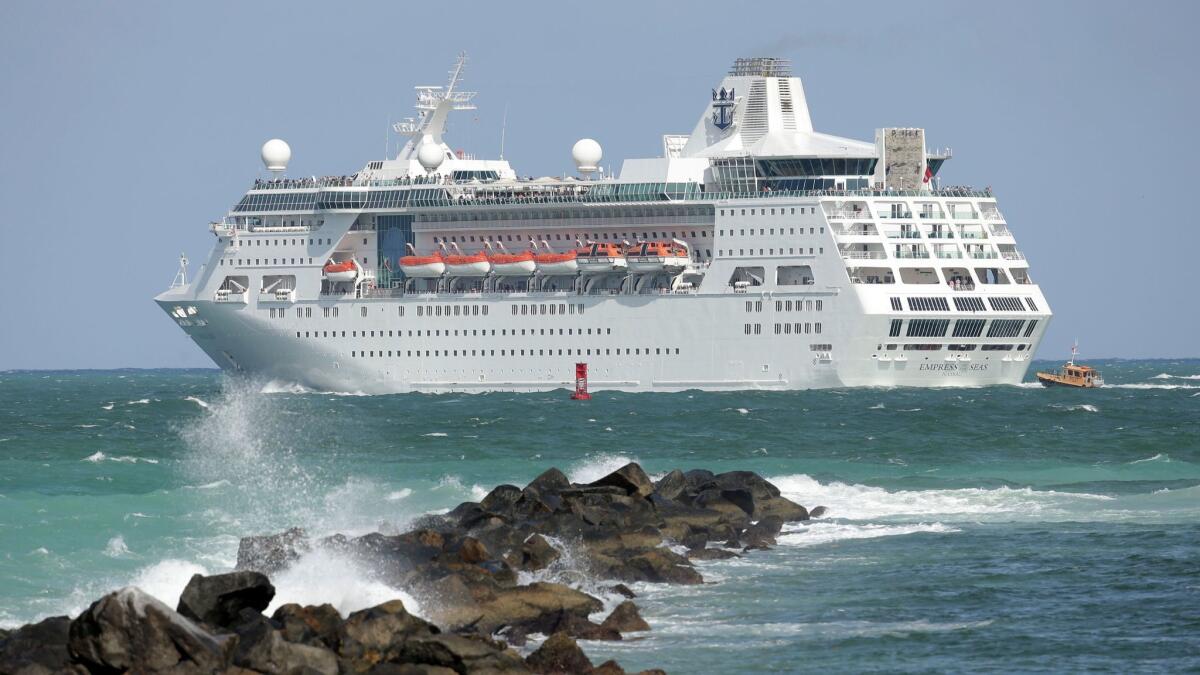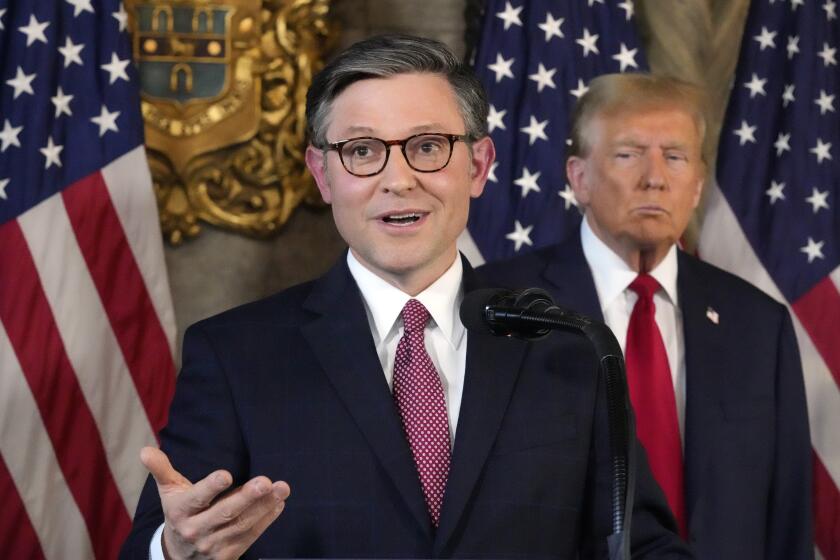Op-Ed: How Grover Cleveland ruined American cruises

These days, anyone can hop on a cruise from Miami to Cuba. But if you try to board a ship from Miami to Key West, New York or Charleston, Grover Cleveland will stop you.
In 1886, President Cleveland tried to protect American jobs by signing the Passenger Vessel Services Act, which permits only U.S.-flagged vessels to carry travelers between U.S. ports, such as San Diego and Seattle or New York and Miami. How does a ship get a U.S. flag? To qualify, the ship must be made at a U.S. shipbuilding facility, owned by an American company and staffed by an American crew.
What Cleveland and his Congress obviously did not foresee was that, by the late 20th century, nearly every cruise ship sailing in U.S. waters would be built abroad — from Princess’ Love Boats to Crystal’s luxury liners to Disney’s magical floating kingdoms.
Would you like to cruise the Hawaiian Islands? You have two options.
You can find a ship willing to make a detour to a foreign port. Say, Ensenada, Mexico (2,600 miles from Honolulu), Vancouver, Canada (2,800 miles away), or Fanning Island (a remote 13-mile atoll belonging to the Republic of Kiribati that Gen. Douglas MacArthur probably couldn’t find).
The PVSA doesn’t just crimp your travel plans. Contrary to Cleveland’s intentions, it costs U.S. jobs.
Or you can buy a ticket on the only passenger vessel in the entire world that has permission to sail between U.S. ports. It’s called the Pride of America, although the story behind that ship does not inspire much patriotic feeling.
In 2001, powerful Southern senators arranged for U.S. taxpayers to subsidize a shipyard in Mississippi so it could build a cruise vessel. It tried, and it failed. Within a year, a bungled, half-completed hull was declared “unfloatable” and was towed across the Atlantic to be completed in Germany for Norwegian Cruise Lines. But to avoid embarrassment to the U.S. government, the ship is still billed as “Made in America” and is free from the knotted mooring of the Passenger Vessel Services Act.
With that one exception, for the last 50 years, American shipbuilders have not riveted together a single cruise ship that fulfills the requirements set forth in 1886.
The PVSA conjures true absurdities. When a collision on the Mississippi led the U.S. Coast Guard to close access to the river in February 2004, two Carnival cruise ships that had left from New Orleans were forced to divert to Gulfport, Miss., and Mobile, Ala. The ships had nothing to do with the crash. Nonetheless, U.S. Customs and Border Protection authorities fined the company $2.8 million for daring to show up at the docks in Gulfport and Mobile and thereby violating the PVSA. Although the fines were later overturned, Carnival would have saved itself a lot of trouble by seeking asylum in Havana.
Often, to avoid falling afoul of the PVSA or being forced to travel in the wrong direction to satisfy it, cruise ships simply skip U.S. ports altogether. Most cruises to Alaska depart from Vancouver, skipping Seattle. Many cruises to Hawaii depart from Ensenada, rather than San Diego.
So the PVSA doesn’t just crimp your travel plans. Contrary to Cleveland’s intentions, it costs U.S. jobs.
Without the PVSA, dozens more cruises would depart daily from U.S. cities such as New York and Seattle, and the hundreds of millions of dollars generated from those voyages would stay within the U.S. economy, providing thousands of portside jobs — for longshoremen loading cargo, bellhops, tour guides, taxi drivers and local farmers supplying fruits and vegetables for those all-you-can-eat buffets. And of course, each stop would generate revenue for U.S. cities in port fees as well as local and state taxes.
Who does the PVSA protect? Not Americans. Instead, Canada and Mexico should send thanks to that Congress of 1886, “attn. Grover Cleveland.” The cruise docks of San Diego sit vacant 90% of the year. Meanwhile, 80 miles south, Ensenada receives more than three times as many passengers as San Diego, and many more than New York, New Orleans and Boston. Vancouver hosts three times as many sailings as Seattle. Since cruising generates an estimated $3.2 billion for Canada’s ports, it’s no surprise that the Canadian government lobbies to preserve the PVSA.
We now have a president who says he wants to put America first. One easy way for President Trump to make good on that pledge is to repeal the Passenger Vessel Services Act, which helps no passengers, provides no valuable services and acts to kill job opportunities — from sea to shining sea.
Victoria J. Buchholz is a corporate and intellectual property attorney in Los Angeles. Todd G. Buchholz is a former White House director of economic policy and the author of “The Price of Prosperity: Why Rich Nations Fail and How to Renew Them.”
Follow the Opinion section on Twitter @latimesopinion or Facebook
More to Read
A cure for the common opinion
Get thought-provoking perspectives with our weekly newsletter.
You may occasionally receive promotional content from the Los Angeles Times.






